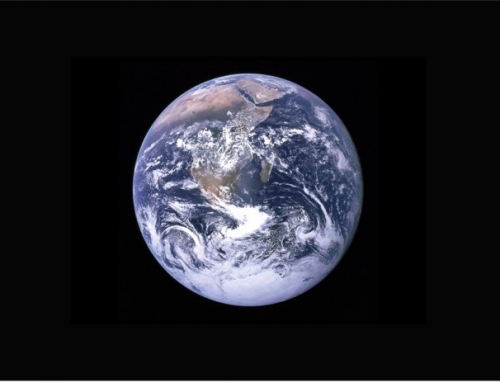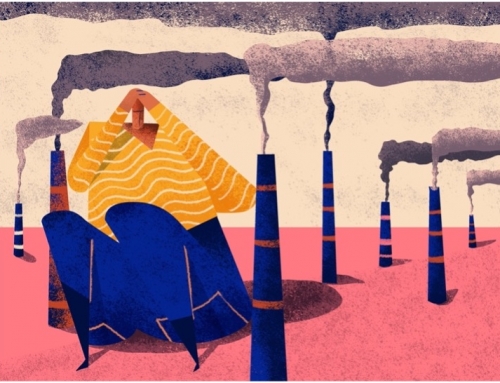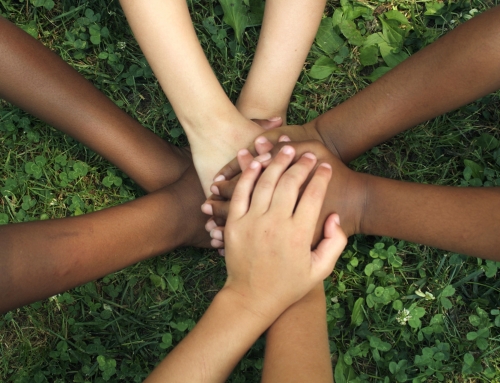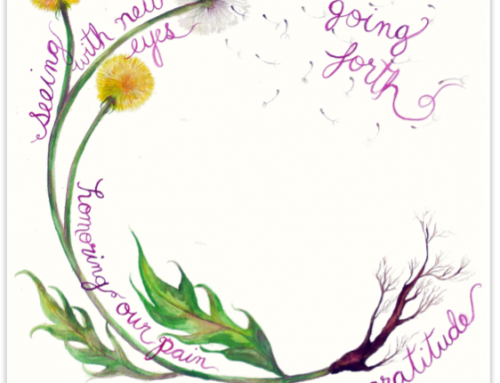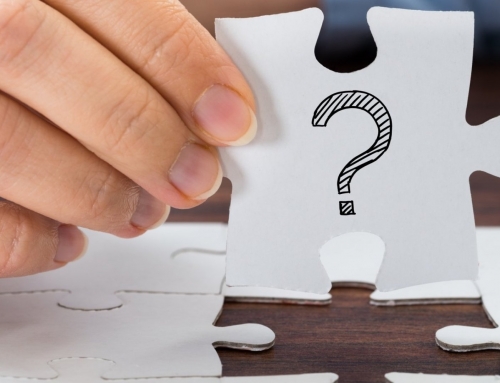
Can you ever be truly finished? I believe not. For now, this is the final blog that I write while being a student at Performatory. Yet, I do not know what the future holds. This is also how I look at my previous project. In the past three to four months, I have been actively engaged in a process together with a focus group to explore if a Compassionate Community can flourish in the current system. This question serves as a part of a bigger ecosystem in which we try to transform. Yet, a process like this is not completed in a few months – there are always new perspectives to unravel, different realities to explore and hidden patterns to find. Nevertheless, in this blog, I will give a recap of where the story started, what happened and what the future beholds.
Where did I start?
Everything started last year when I devoted my research to the effect of a crisis and how we can focus on its positive impact. In this research, I discovered that parts of our behaviour in uncertain times is a nocebo effect. Thus, it describes a situation where negative outcomes occur due to a belief that the intervention will cause harm (Brasil, 2019). Subsequently, it is not set in stone that a crisis only haves a negative impact on society while many believe this. Moreover, there is space to work and to transform in this challenge. Additionally to this research, I also learned during my time at Performatory that I want to connect with people – I want to build relationships. I believe this is key to sustainable transformation and that dialogue is the tool to get there. Later on in this blog, I will explain why.
From my interests and beliefs, there were many options to continue this research. Yet, I feel comfortable working with people and I want to empower them to transform. Moreover, I aim for co-creation and co-designing. With this said, I connected to a manifesto of the professorship end-of-life care which empathises on the increase of compassion, resilience, grief and collectivism to create a Compassionate Community. A Compassionate Community believes in the strength of the collective and social capital. Yet, everything that is done so far concerning this topic was focused on theoretical statements concerning what should change to make this work. Thus, there was no clarity in what society thought of these ideas. That is where I step into this process to explore a whole new realm. In this, I stay connected to my beliefs in which I aim for co-creation and work according to the power of the people.
Process
In the starting phase of my project, I spoke to a lot of professionals whom all had their interpretations, beliefs and wishes for a Compassionate Community. However, it worried me that this started to become such a hot topic without knowing what society wants. I started to dive into the theory and learned that Kellehear (2013) – initiator of Compassionate Communities and Cities – believes that this movement is from and for society. Yet, how we approach it now is very top-down focused. Moreover, we work towards a structure where the top creates space for the bottom to act without knowing how, where and when to do so. This creates unwanted actions, unhealthy patterns, misconceptions and most importantly, no sustainable change that adds to the well-being of all.
For this project to work, I decided to step out of this pattern and follow my path. I started working with the people instead of working for them. I wanted to explore their values, beliefs, fears and worries collaboratively to learn to understand what should transform to create this safe feeling of a Compassionate Community. To do so, I started with building relationships, transform the conversation into dialogue and go from an individual perspective to the healing power of social material.
Building relationships
To understand what is needed to transform, you need to understand what the people want. Choosing an approach before you stepped into a process can lead to more struggles than simply stepping in and discover what is needed. This empathises on a statement that I made in one of my previous blogs namely that the question that is asked is rarely the question which you will end up solving. I have learned to trust the process enough that I can step in, sense what is happening, and act according to what I see and the knowledge that I have. In this, I have never wanted to be leading because this goes against the values that I work with. For that and many other reasons, I focused on building relationships.
For me, a relationship is between two or more people who build a bond of trust, commitment and protection. Moreover, you create a safe space to experiment and in this, you secure yourself that when something happens, you have others to rely on. Looking back at my process, I started focusing on this from the first second I stepped in. With this new focus group, almost no one knew each other. Yet, I knew for sure that this soon was going to change. Focusing on the individual needs of people can help to create clarity and trust in each other. When trust is achieved slowly we start to work to finding a common ground and shared values to work with and towards. All of this adds up to group feeling and eventually becoming a collective in which your assets thrive for everyone close to you.
From conversation to dialogue
So, when the relationship is the experience of the process, dialogue is the tool to get there. When it comes to (sustainable) transformation, there are many ways to get there. Yet, in every process, it needs its personal approach to succeed. I believe that many forget that this is not only a process of succeeding. It is about experimenting, finding out that something does not work, adjusting and trying again until you get to the point that you start to move something. The example of Compassionate Communities started with this theoretical framework that should change the whole system. However, to change something there must be energy and the acceptance that we are part of a bigger ecosystem.
People spoke about what the similarities and the differences are between the current system and the desired system. Yet, this form of conversation will always stay flat. To create meaning, you should focus on dialogue. Dialogue accepts different perspectives on the same situation and focuses on making an impact. So, having a conversation about Compassionate Communities means that you discuss what you see and want. However, by having a dialogue about Compassionate Communities, you will strive to find a shared meaning according to your beliefs, values and actions. In this process, I have learned that dialogue is the initiator of everything that you ever would like to achieve.
A simple example the focus group focused on concerning dialogue and the use of language is ‘’how are you?’’. This is a frequently asked question. Yet, it is more of a formality instead of truly listening to the answer. In a conversation, you would ask ‘’How are you doing’’ to get the answer ‘’I am fine thank you, how are you?’’. The interaction is flat and almost meaningless. However, when you receive this answer in dialogue, you would actively listen to understand and stay in this conversation to explore how someone is truly feeling to collaboratively search for a way how to continue from this momentum.
The healing power of social material
According to the focus group, we aim for a society where the focus is not on formalities anymore. We start meaningful dialogues because we want to know the answer. To do so, a Compassionate Community flourishes on the following values: support, connection, passion, learning, influence and sharing. Empowering these values would lead to a whole new realm of how society can be perceived. In an ideal world, the transformation will take place in the social capital and shift the way how we interact with each other.
If and when we start to look out for each other, the relationships will change. As Compassionate Community, the belief is in the strength of us where we, collaboratively, focus on relationships to transform our lives and communities. During the process, the focus group created the metaphor of the social fabric. Every individual can be seen as a loose string of material that faces challenges on its own. A loose string cannot move the other strings without energy and even though while being in the middle of others, still feel as if it is on its own. However, if we manage to succeed to weave these strings together with our energy as investment, we start to create a social fabric of individuals who desire to change for the well-being of all. We commit to each other and find our strengths in support, connection and passion while we will learn along the process.
Can we transform the system?
To conclude this story and to answer the initial question can a Compassionate Community flourish in the current system? The answer is yes and no. Yes, because the focus group gave the example that it is possible to start living according to your desires. No, because the current system with its patterns and behaviours is not build to enhance these transformations. Notwithstanding, it is a very delicate process to change the system. What often happens is that people are done with the current system and escape it by building a new one. Often this is in the form of a hierarchy where the persons or organisations on top are the most important. Yet, by building this new system, other people will end up at the bottom where they do not wish to be.
So, to transform a system is key is not build a new one, but it is about dissolving the current. When you dissolve the system, you will start with the people at the bottom who have less risk. Yet, they are with the biggest entity and with a proper approach such as dialogue, it is possible to find a common ground and shared values. Eventually, the mass will start to sink into an equal level. In this, you can leave drops of energy that can amplify with others to ignite a bigger movement.
This is exactly the current state of the process after I stepped out. The focus group has built relationships, have found a common ground in the healing power of social material by having dialogues. When this small group of people have found their shared language, they are prepared to find others who might want to join to slowly dissolve the current system. Maybe a bottom-up movement takes longer to achieve its goals. However, I am sure that by doing this, the results will be sustainable and it adds to the well-being of all.
What does the future behold?
During my final meeting with the focus group, someone said ‘’if you would believe as much in the things that you dream of as that scare you, you would not only dream of them anymore – you would pursue them’’. Yet, what does it mean if I dream about the thing that I am scared of? I dream about being able to continue in this field of innovation and transformation and where I can be involved in project and processes that add to the social capital. Yet, it also scares me to start this.
However, this project has shown me that you are never on your own and that I have the strength and energy of the people who are close to me. For that reason, I hope to follow my dream and start as an entrepreneur who is involved in the process of building relationships, support social transformation and fight against the nocebos for the well-being of all.
Bibliography
Brasil, R. (2019, March 7). The nocebo effect. Retrieved 3 June 2021, from https://medsafe.govt.nz/profs/PUArticles/March2019/The%20nocebo%20effect.htm#:%7E:text=The%20nocebo%20effect%20is%20the,the%20Latin%20’to%20harm’.

